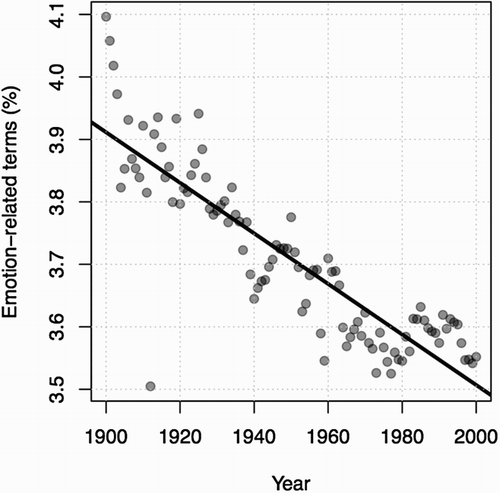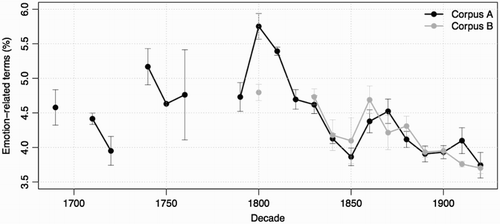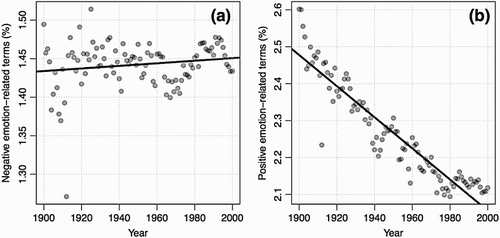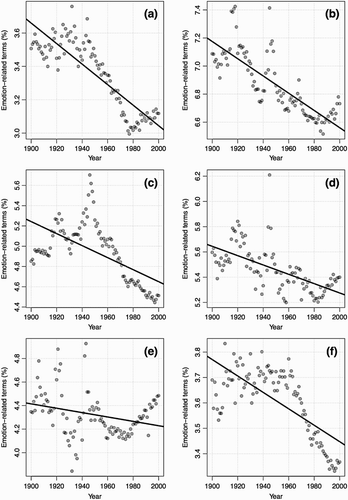Figures & data
Figure 1. Emotionality changes in Anglophone literature, for the Google Books corpus. The solid line represents a linear regression of the data.

Figure 2. Emotionality changes in Anglophone literature, for the two “small data” corpora. Error bars represent 95% confidence intervals.

Table 1. Predictors of emotionality: fixed effects estimates for Models 2a (Corpus A) and 2b (Corpus B).
Figure 3. Emotionality changes in Anglophone literature, for the Google Books corpus. (a): negative emotions-related terms. (b): positive emotions-related terms. Solid lines represent linear regressions of the data.

Table 2. Predictors of positive emotionality: fixed effects estimates for Models 7a (corpus A) and 7b (corpus B).
Table 3. Predictors of negative emotionality: fixed effect estimates for Models 10a (corpus A) and 10b (corpus B).
Figure 4. Emotionality changes in six additional Google Books corpora. (a) British English (texts in English language published in Great Britain). (b) French. (c) German. (d) Italian. (e) Russian. (f) Spanish. Solid lines represent linear regressions of the data. See Supplementary materials 5 for details of the analysis.

